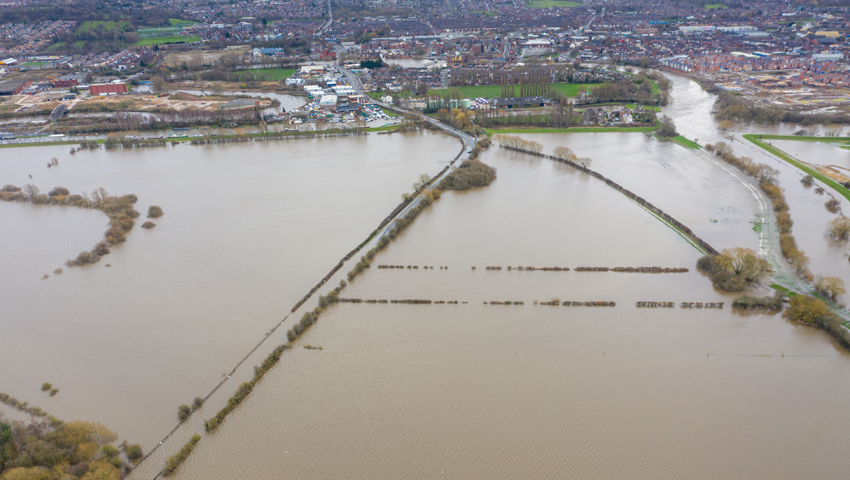By former Environment Agency manager, Dave Throup
QUITE rightly a lot of recent coverage has focussed on the difficulties farmers have been facing due to the recent deluge. Unfortunately this is just the beginning.
Farming always has, and always will be, to a large extent at the mercy of the weather – and the weather in the UK is notoriously variable as we sit in the battleground of various airmasses.
But climate change, almost all the result of human greenhouse gas emissions, is making our weather much more extreme.
Very dry and very wet months are becoming more common, temperature records are being beaten with regularity and heatwaves getting more extreme. Once a decade type events are now happening much more often and coping with these events when the weather largely controls your business is increasingly difficult.
For example, the 2019 harvest floods, the 2022 extreme heat stress, the 2023 harvest floods… and the future looks much more turbulent.
For 20 years or more we’ve known that we’ll see warmer, wetter winters – hotter, drier summers – and more extremes of rainfall.
But more recent research and modelling has put more detail on what this might mean. Based on the heating trajectory we’re currently on, by 2050 (just 26 years away) we can expect daily winter maximum temperatures to be 1.5° warmer and 10% more rainfall. Summers are likely to see daily maxima 2.4° warmer than today’s already very warm conditions. And total rainfall a quarter less.
But, of course, these are just averages and we expect to see many more extreme events. Heatwaves will become much hotter and downpours much heavier. Very intense rain likely to become almost 50% more intense.
These changes will also have very dramatic effects on our rivers and watercourses. Summer flows may well be 60% lower than today while winter floods are 30-40% bigger.
For agriculture, the implications of all this are varied and significant.
Changes to growing seasons, heat stress, drought, wildfires, floods, soil erosion, new pests & diseases and salt water ingress to name a few. All will become more extreme.
Recent research [https://iopscience.iop.org/article/10.1088/1748-9326/ab492b] suggests major changes will be needed in the near future.
While longer growing seasons and increased CO2 will aid crop growth, the benefits will be more than cancelled out by water availability problems and heat stress.
Cereal production in traditional areas of eastern England is likely to require unsustainable amounts of irrigation in future (equivalent to 200mm extra rainfall), forcing a movement west.
In areas and times of water shortages, public supply is always going to trump other needs.
Many of our agriculturally most productive areas are only a few metres above sea level and very flat. This not only makes them vulnerable to sea level rise but also to long duration rainfall flooding as water drains away very slowly.
Water management is undoubtedly key to the future of many farming businesses.
More flexible abstraction licensing, more storage and river management all have parts to play. But coming changes are so big we’re not going to dredge, pump and engineer our way out of them.
Farming’s a tough job and due to now inevitable climate change it’s going to get a lot tougher over the next 20 years. Some businesses will be able to adapt and diversify, some will not. Meaningful & fundamental conversations about future land use needed.
